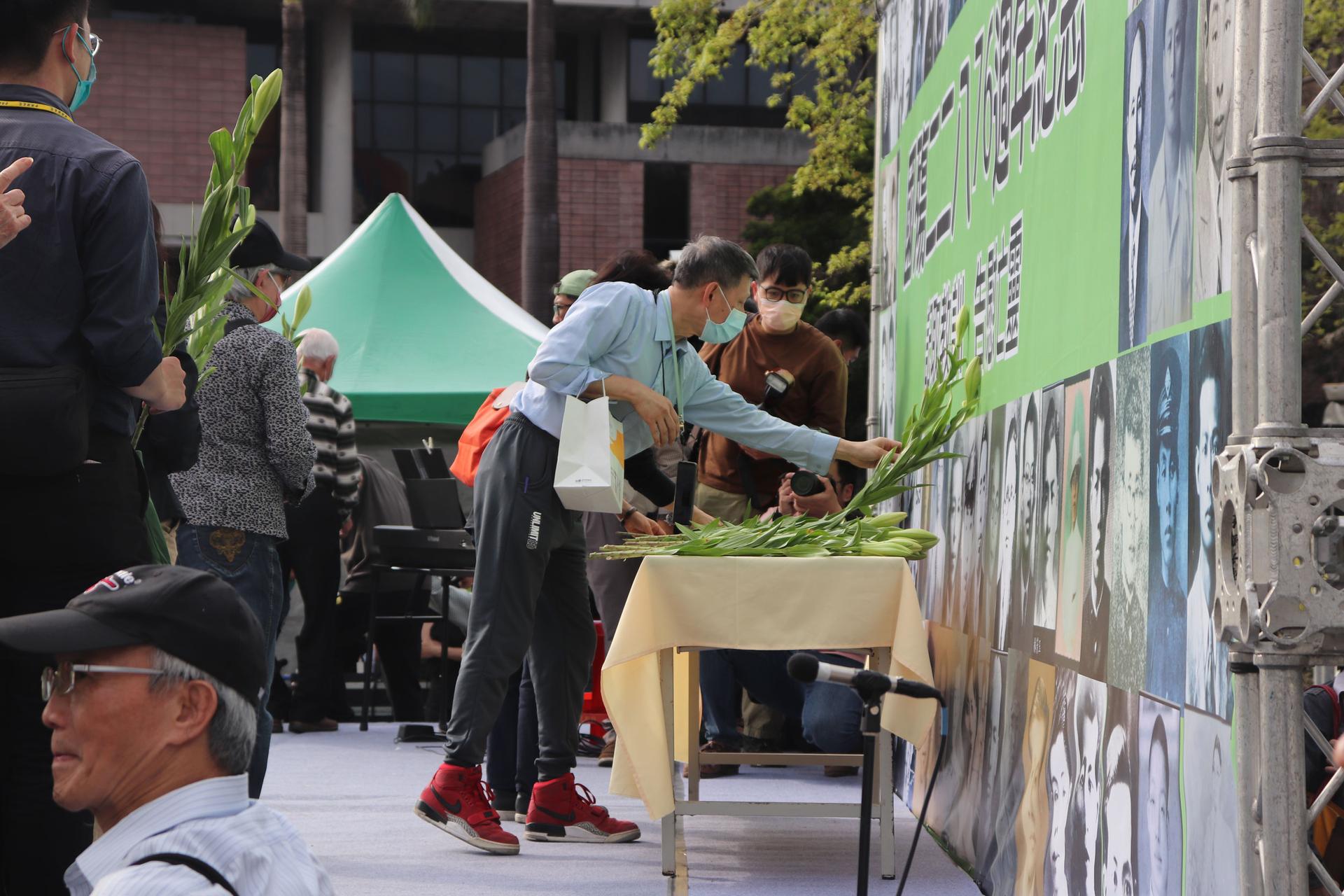‘Kneel and apologize!’: 76 years after island-wide massacre, Taiwan continues to commemorate — and debate — the tragedy
Feb. 28 marks a national holiday in Taiwan commemorating a massacre that occurred 76 years ago.
Several memorial events took place all over the island. At one event in Taipei, the capital, protesters rushed the podium as Mayor Chiang Wan-An was giving a speech.
The protesters carried white banners and shouted: “Kneel and apologize!”
In 1947, two years after taking over the island from Japan following World War II, the Chinese Nationalist party (KMT) killed thousands of people across Taiwan. It’s often referred to in Taiwan as the 228 massacre, to mark the date on which it started.
The protesters were upset because Chiang claims he is the great-grandson of Chiang Kai-Shek, the KMT’s leader at the time of the massacre.
Chiang stayed at the podium as security guards restrained the protesters just a few feet away. He said he respected differences of opinion, and he apologized for the massacre on behalf of the Taipei city government.
Many 228 memorial groups argued that Chiang still hasn’t apologized on behalf of his family, and decided to boycott his event.
One of these groups chose to hold their memorial at one of Taipei’s most recognizable landmarks: the sprawling, 50,000-square-foot memorial hall dedicated to Chiang Kai-Shek himself.
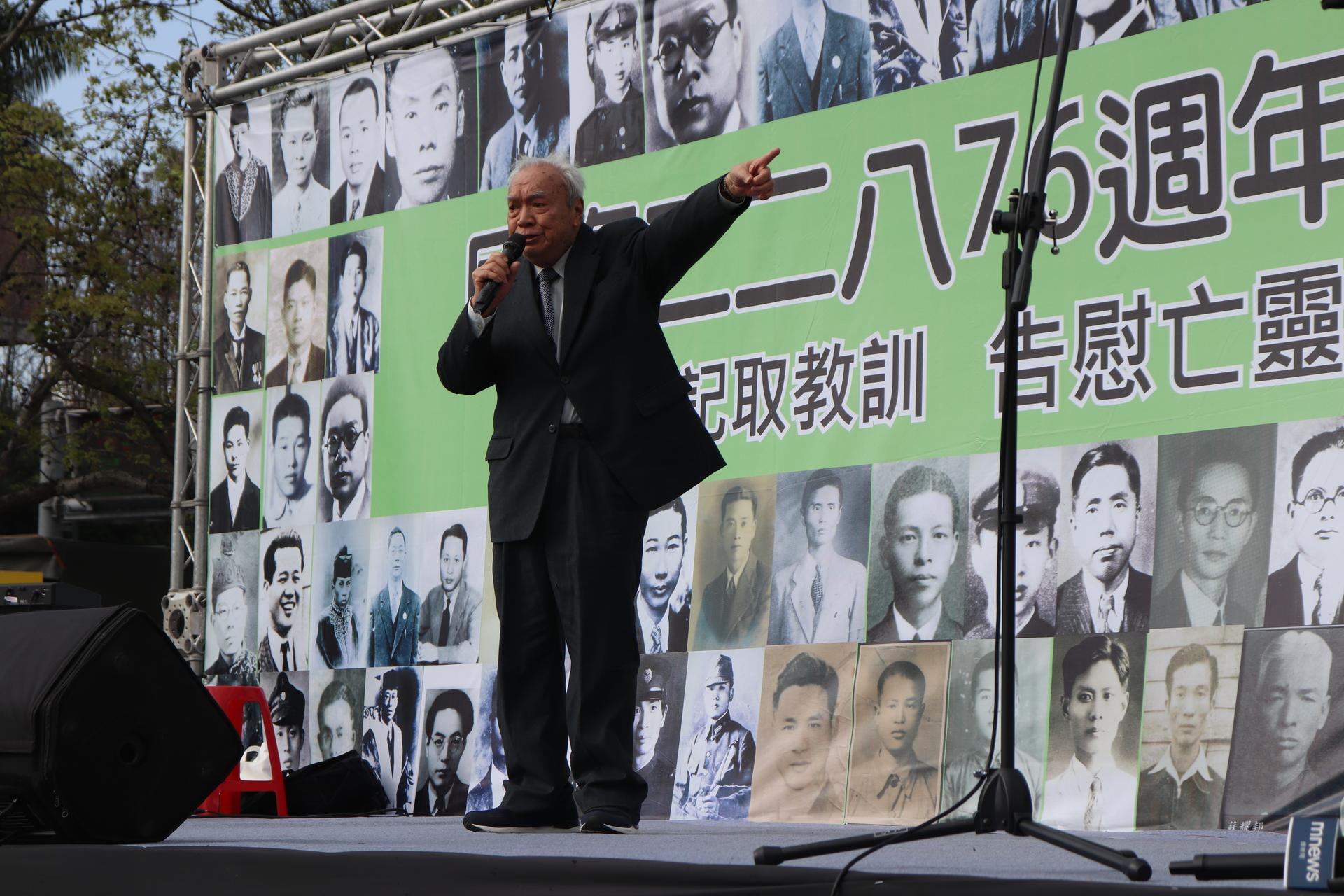
They’re not happy that this monument still occupies a place in downtown Taipei.
Amy Lee was one of many descendants of the victims of the 228 massacre who spoke at the event.
In her speech, she told Chiang Wan-An and the KMT to look at the photos of the victims on a banner just behind her, and hear the voices of their descendants.
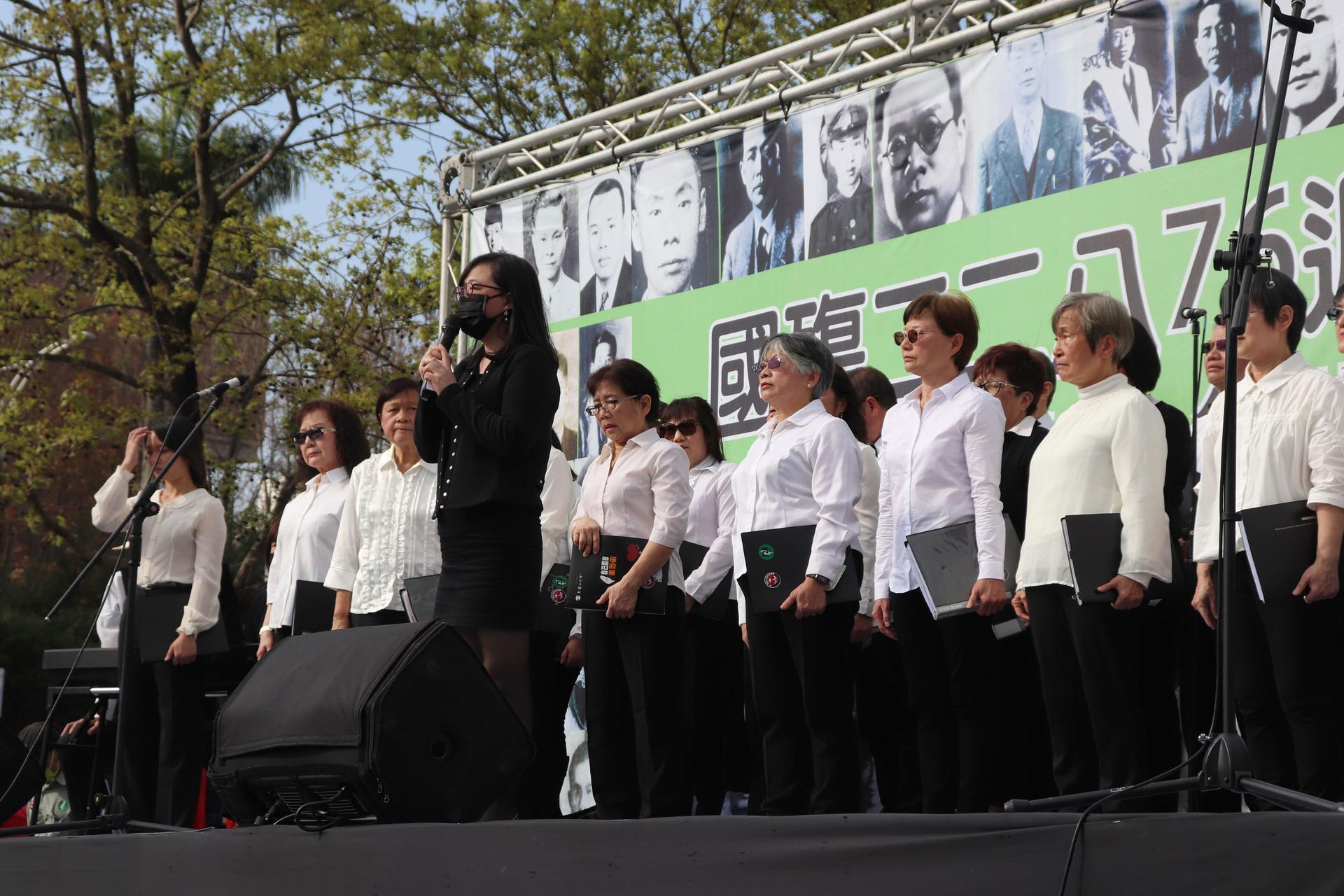
Lee’s grandfather, Lee Ruei-Han, was one of the victims. He was 45 at the time, and a prominent lawyer.
In the years leading up to the massacre, the KMT actually started their rule in Taiwan with an immense amount of goodwill, according to historian James Lin at the University of Washington.
After 50 years of Japanese colonial occupation, many in Taiwan believed the KMT would treat them better as fellow Chinese countrymen.
Soon afterward, however, “when the Nationalist government arrived…they treated Taiwan more like a conquered territory than as a liberated people,” Lin said.
So on Feb. 27, 1947, when KMT soldiers attacked a poor widow in Taipei for selling contraband cigarettes, it struck a nerve. The island eventually erupted in protest.
“The Taiwanese thought about it as a demand for political reform,” Lin said.
“But from the perspective of Chiang Kai-Shek, this was an insurrection. And these had been common in mainland China under the [Republic of China] dating back for decades…so it was quite typical to dispatch the military and put down what they perceived to be a rebellion.”
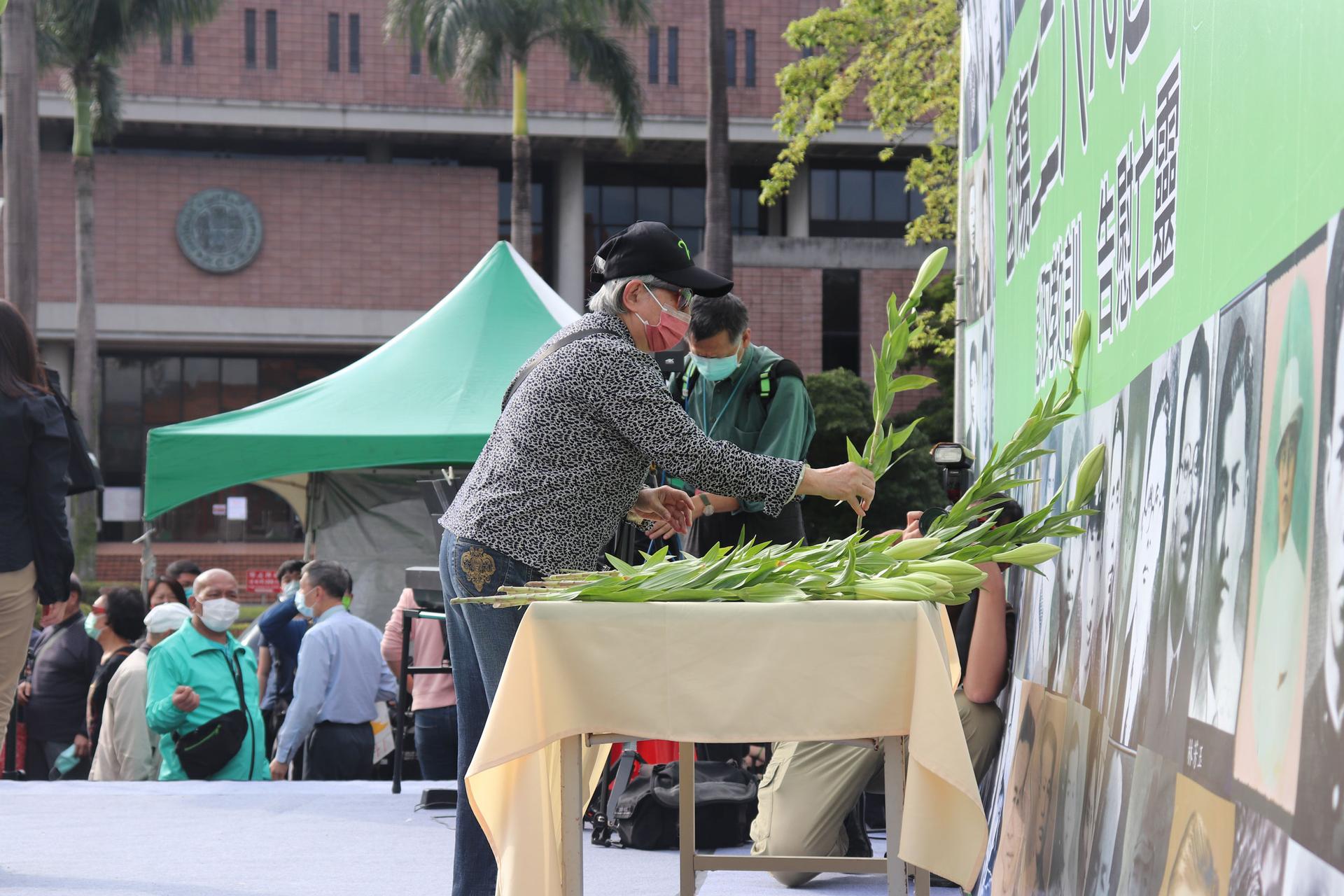
What followed was a monthslong campaign of terror and killings.
Amy Lee’s father was 15 then.
On March 10, 1947, the family had welcomed other lawyers to their home to meet with the KMT. They were getting ready to eat a dinner of squid porridge when KMT soldiers showed up, put a blindfold on Lee Ruei-Han, and told him to get into a jeep.
The next few moments would haunt the Lee family for generations.
“My father was chasing after the jeep,” Lee said.
“So my grandfather turned and ordered him in Japanese, ‘Go back home!’ Those are the last words my father heard from my grandfather.”
Nearly 80 years later, the Lee family still haven’t been able to recover his body. All they know is that Lee Ruei-Han’s name was on a KMT “Blacklist,” along with several other prominent members of Taiwanese civil society who were also killed during that time.
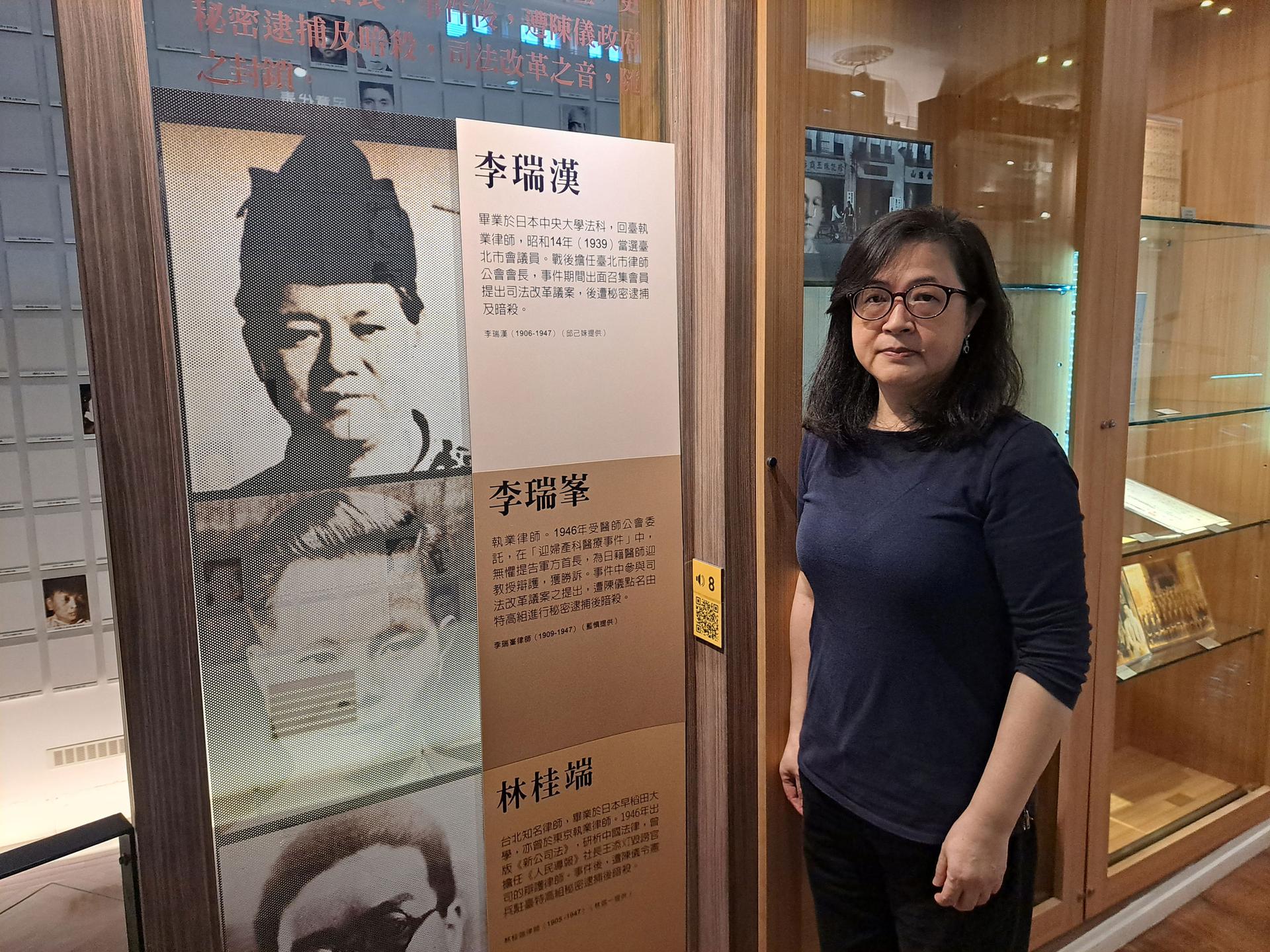
Historian James Lin said this event was the beginning of almost 40 years of martial law.
“This is when Taiwanese people began to truly fear the Nationalist government and to fear that voicing any kind of desire for political reform would result in being detained for years, or being executed,” Lin said.
Today, decades after Taiwan democratized in the late 80s, many of the facts about the 228 massacre are widely known and taught in schools.
“For Taiwan it was extremely hard fought,” Lin said.
“Many people spent many years in jail, many people lost their lives, as they struggled to make democracy a reality for Taiwan.”
But opinions are still split on Chiang Kai-Shek’s legacy. Some Taiwanese people still associate him with economic growth or nostalgia for the period of Chinese nationalism.
Chen Chia-Hao, an associate research fellow at the National 228 Memorial Museum, says that even within his own family, he can recall a bitter argument about the facts of the massacre.
Chen recalls his uncle, a retired elementary school teacher, was very strongly supportive of the KMT. He argued that the narrative around the 228 massacre was created by Taiwan’s current ruling party to harm the KMT.
“I remember at that time my grandpa was so angry, and he told my uncle, ‘I witnessed that incident, so it’s not fake! It’s real history.’”
Chen said that since democratization, successive Taiwanese governments, including KMT administrations, have supported research into the 228 massacre. But he said there are still archives that haven’t been opened for study.
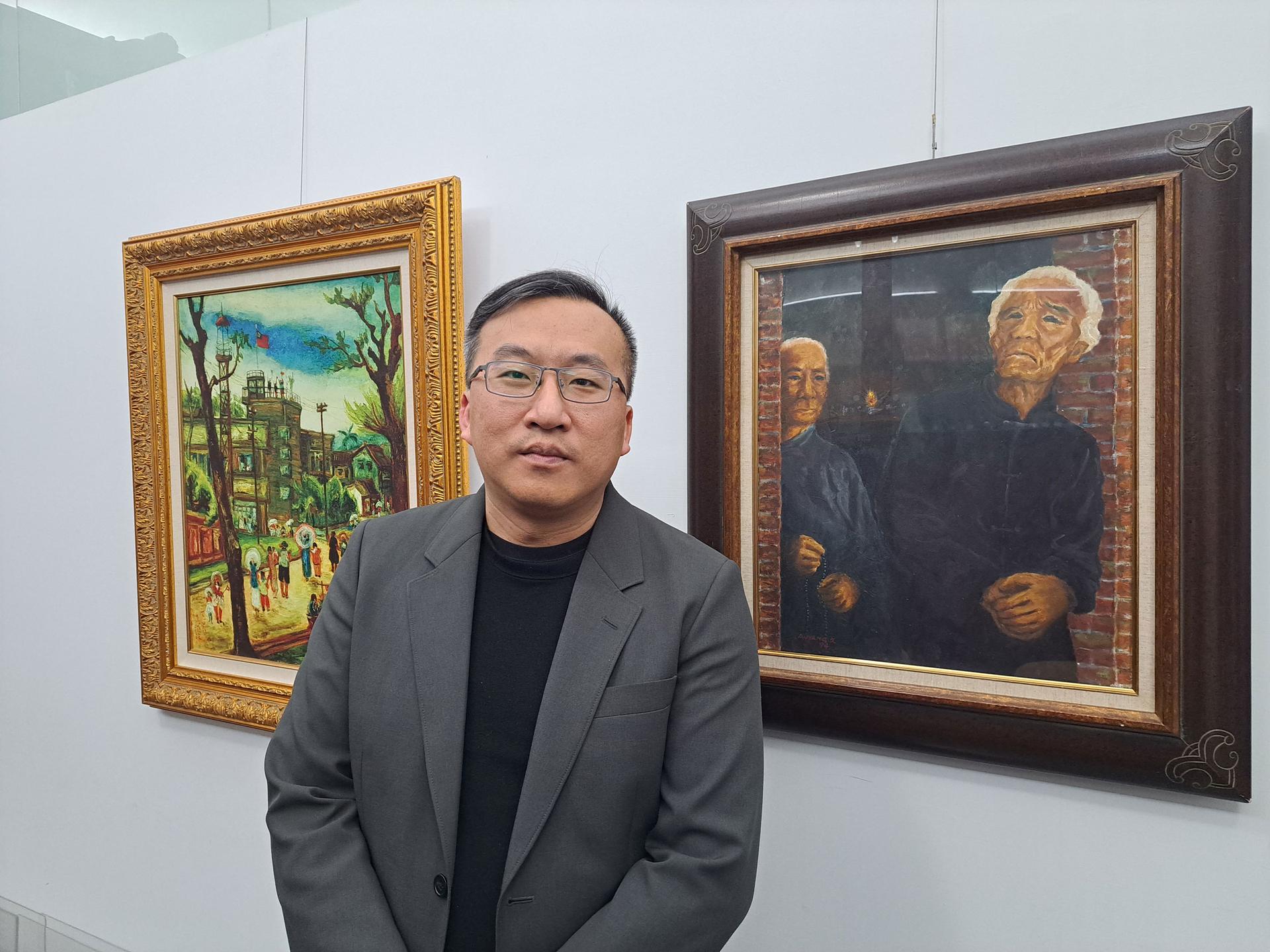
Back at the memorial, Amy Lee finished her speech.
“I’m just a member of the victim’s family, a common person. I have just one small wish that real justice will be revealed in this land, the land that I love.”
The service ended as everyone laid water lilies — an old symbol of democratic struggle in Taiwan — at an altar to the victims.
Right before leaving, many sat down to eat bowls of squid porridge. Lee had prepared them beforehand — a yearly family tradition that she has taken on and continues.
